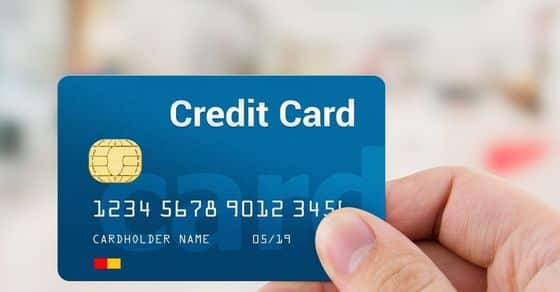More than 785,000 franchised businesses in the United States generate about $500 billion annually in revenue. Franchising is a legal business pattern and the idea that helps you grow and expand one’s business. As a franchisor, you will be permitting franchisees the license and right to open new franchise locations that duplicate your business model using your trademarks while benefiting from your training, business systems, and ongoing support. In turn, franchisees will pay you initial franchise fees and ongoing royalty fees with the aim of securing and managing new franchise locations that eventually increase your overall system sales. Stay tuned to learn more about how to create a franchise business plan or idea in texas with no money.
Understanding Franchise
To elaborate on the foregoing, a franchise is a license that permits the holder to use the franchisor’s trademarks, trade secrets, and other private business information in the course of operating a business under the franchisor’s brand. The franchisee often pays the franchisor both an initial startup fee and ongoing licensing fees in exchange for the right to operate under the franchise brand.
When venturing into a crowded market like the tech sector, the food service industry, the airline company, etc., franchises are a common choice for new business owners. The well-known brand of an already successful business is one of the greatest benefits of investing in a franchise. There would be no need to promote your business or sell any samples to anyone because you’re already affiliated with the big name in the said industry.
Types Of Franchises
There are five main types of franchises you’re likely to encounter, each of which comes with its opportunities and considerations. Let’s take a look at them below:
#1. Job-Franchise
How to franchise a business plan means to singlehandedly own a business model designed and managed by you alone or with little staff. It is a low-investment opportunity that can be operated from the franchisee’s home or on a mobile basis hence buying franchises to create jobs and income for themselves. The franchisee also delivers services or sells products to their customer base. An example of a job franchise would be cleaning services, lawn care, mobile, and coffee business.
#2. Distribution Franchise
In a distribution franchise, the franchisor grants the franchisee the right to distribute or sell their product or range of products to customers. A distribution franchise is different from other types of franchises because the franchisee operates and sells the franchisor’s product under their own identity rather than adopting the franchisor’s name and operational systems. Examples of distribution franchises include car dealerships and electrical appliance retailers.
#3. Conversion Franchise
This type of franchise happens when the franchisee joins the franchisor’s network already owning an independent business within the franchisor’s industry. The existing entity is converted into a franchise branch.
This allows a franchisor to very quickly expand a network, whilst offering the franchisee the benefits of becoming part of a well-known brand with all of the operational and financial plus the points of being part of a network with training and support. Conversion franchises are common within the real estate industry, dental and medical clinics, and hairdressing.
#4. Business Format Franchise
The business format franchise is the type that comes most in people’s minds when they think of franchising. Under a business format franchise, the franchisor provides the franchisee with everything needed to set up and operate the business from equipment and premises if required, to training, operational systems, supplier contracts, marketing tools and support, and more. The business format franchise covers a broad spectrum from fast-food restaurants and coffee shops to business services and personal care.
#5. Investment Franchise
An investment franchise is at the other end of the scale from the job franchise. It is a large-scale operation requiring significant capital expenditure. In most cases, the franchisee will not be involved in the business on a day-to-day basis at all, and in all cases, the franchise will require a significant professional management team to operate it.
The franchise is likely to be a corporate investor and to have significant commercial experience in the same or similar sector. They may already own other franchises within the same industry. Hotel and large restaurant franchises are good examples of investment franchises as well as some retail franchises and gym brands. The type of franchise right for you depends on the size and complexity of your business and the industry you operate in.
How Much Does It Cost To Franchise A Small Business?
The franchise cost of your business will depend on what franchise assets you already have (trademarks, operations manuals). the franchise suppliers that you choose, and how much of the heavy lifting you will do yourself. Generally, it should cost between $27,000 and $129,000 to franchise your business. Some of these costs are legal expenses, and some are business expenses.
How To Franchise A Business Idea
There are several steps to finding a business for the franchise. After you decide to pursue this business which is from picking to getting a license to securing the space you need because the process is usually long and involves considerable cost. I will be explaining the best ideas on how you can franchise your business.
#1. Research Franchises
If you already have a business in mind or at least in a general field, make sure to make some research about available franchises and companie, then choose one that aligns with your personal values and business goals. know your strengths and weaknesses, previous experience, and your investment budget. You can find franchise opportunities on websites like Franchise Direct which categorizes franchises by industry, working from home, and lower-cost ones. The following are the key points to keep in mind while you’re picking a franchise opportunity,
- Industry fees
- Liquid capital needed
- Average monthly/yearly revenue
- Royalty fees
- Marketing fees
- Other fees
#2. Evaluate Opportunities
Before you start a franchise business, you should make sure that one doesn’t already exist in the area although some businesses can exist throughout a city, such as KFC. Also, be sure not to set up a competitive location that could cause you to underperform.
3. Evaluate Costs
When you’re looking into starting a franchise business you’ll have to be on top of a few different costs but for regular business costs such as rent and maintenance, you must pay a yearly royalty to the franchisor. Other costs include travel, training with the company, and paying local taxes. Having a realistic idea of your start-up costs will help you save money or apply for financing that covers everything.
#4. Draft a Business Plan
A solid business plan will help you show your vision to potential lenders, proving your case on why they should work with you to fund your new business. Additionally, most franchisors require applicants to submit a business plan before they approve your franchise. Knowing how to franchise a business with no money can help guide you in your business plan:
- Introduce the company
- Define the product or service
- Include your preliminary market research
- Describe how you will manage the business
- Introduce the management team
- Include your marketing plan
- Estimate your financials
Don’t assume potential lenders are familiar with your franchise brand unless you’re working with a large global company like McDonald’s. When you’re describing the company and its products, pitch it like you would if you were starting a new business from scratch. Your business plan should prove to lenders that you’re credible and likely to launch a successful business.
Speaking of Business plans, we have professionals at Businessyield Consult, who will be glad to assist you in writing a compelling business plan that would win more investors than you could possibly imagine. We are just an email away.
#5. Start an LLC
Being an entrepreneur comes with different tax challenges than those associated with traditional employment but setting up a legal entity for your business offers legal and tax benefits that you might not be able to get as a sole proprietor. Starting a limited liability company (LLC) or another type of business entity helps protect your assets if someone sues you, you go bankrupt, or other tricky situations arise. You don’t have to have a franchise agreement in place to form your business just Pick your name, choose a registered agent, and file the required documents with your state.
#6. Prepare a franchise disclosure document (FDD)
According to the franchise rule, you can only sell a franchise to a prospective franchisee once you provide them with an FDD that complies with FTC rules and regulations. An FDD is like the articles of organization for your franchise—it introduces key players, defines operating terms, includes financial statements, and addresses the obligations of your franchise agreement. Beyond the federal FDD requirements, some states have their own rules for selling franchises within their borders.
#5. Get the Franchise License Agreement
A franchise license agreement is a contract binding you and your franchisee to certain expectations that will define how the franchise operates. A franchisee is an independent contractor, not an employee, and must sign this contract to align with the franchise. Once signed, it will live in the FDD that you compile for each franchisee. The franchise agreement doesn’t need to adhere to a certain format, but the best agreements are clear and thorough. Yours might include
- Franchise fees (upfront and recurring)
- Terms and conditions for renewal of the agreement
- Conditions for terminating the agreement, plus post-termination terms
- Rules governing the transfer of the franchise to a third party
- Opening timeline for the franchise
- Minimum sales requirements
- Franchise territory protections
- Equipment, supply, and inventory specifications
- Noncompete agreements
- Dispute resolution methods (like mediation or arbitration)
Note: Not all of the conditions above will apply to every business model.
#7. Choose a location
When you’ve been approved, look for a location. When you did your market research and business plan, you probably got a sense of where you wanted to open. A large part of how to franchise a business is picking the right location.
Research new developments in the area and look through commercial real estate listings to find open spaces, then look for a spot whose demographics align with your potential customers. Consider rents and potential competition in the area as well.
#8. Start training
Once you’re approved to open your franchise you will likely be trained by a franchisee relationship manager or someone else from the corporate office. At the least, you should be given access to all corporate rules and expectations for franchise owners.
Make a list of questions to ask during training and start strong. You might ask about marketing and promotional resources, management and hiring, and other operational basics that can help you succeed. Most franchisors have solid guidelines for signage, branding, and marketing, how to set up a social media presence for your particular franchise location, and other local marketing strategies you can use to create a buzz in your neighborhood.
#9. Make Key Hires
As you prepare to become a franchisor, you’ll need to add several staff members who will focus solely on helping franchisees. Once you have your agreements and a location in place, you can start looking for employees. The franchisor probably has job descriptions and titles set up already so it’ll be easier to post the job openings and start searching for good employees. The franchise owners might have an internal job posting system as well, in case there are employees at other franchise locations looking to relocate.
#10. Sell Franchises
Now that you’re in business as a franchisor, one of your most pressing activities will be to find franchisees and convince them to buy your concept. Apply standard sales techniques including attending franchise fairs or hiring independent franchise marketing firms to help locate investors. In addition, Host a soft opening to train your new employees and introduce your new business to the area. Collect emails from people who come to the soft door and use email marketing automation to grow your franchise.
How To Franchise A Business In Texas
One of the nation’s largest states, Texas has long been a place of strength and growth. Its booming population means a diverse talent pool and plenty of consumers to go around. The state’s economic growth and employment rates are consistently higher than the national averages. Texas business regulations are encompassed within the Business Opportunity Act, and this state stands unique among the others with its definitions under the BOA. Texas is a Franchise Filing State. A franchisor must,
- File a Business Opportunity Exemption Notice.
- Pay the $25 fee.
- Ensure the FDD is compliant with Federal Franchise Rule (overseen by the Federal Trade Commission).
There is a mass exodus of potential business owners leaving their states for the lone Star state. Business is booming there, but before you rush out the door to start your business, there are some interesting things you need to know about how to franchise a business in Texas with no money.
- Top franchisees in texas require trades
- Massive support for franchises by communities in texas
- Locations for franchises in texas are more than enough
Guide On How To Franchise A Business In Texas
Below is a guide on how to create a franchise business plan
- Write a business plan
- Choose a business name
- Select a business stricture
- Appoint a registered agent
- Register your business in texas
- Get an employer identification number
- Open a business bank account
- Register to pay taxes in texas
- Get a business license and permit
- Maintain compliance on reports when due
How To Create A Franchise Business Plan
Creating a franchise business plan from scratch can be crucial without knowing the seven key elements. Using the right components can help you start your franchise business and apply for funding.
A business plan is not only a written document that narrates the core detail of your business but also has a list of your objectives that includes the operations, the marketing strategy for growing your business, as well as the financial projections. Below are ways how to create a franchise business plan with no money;
Our professional will use the following template in writing a well-detailed business plan for you. As long as you’ve got a business idea, we’ll provide you with a business plan. Contact us right now
#1. Executive Summary
You can create your franchise business plan with an overview or summary of the essential information you are providing in your franchise business plan. As it will explain your business, the executive summary section should answer the following questions:
- Which service, product, or need, does your business serve?
- Is your business unique?
- How will you ensure your company’s success?
- What skills do you possess that will help the business excel?
#2. Business Description
The business description section of the franchise business plan summarizes your business. It should contain your,
- company’s structure,
- mission statement,
- company history,
- future projections.
While you don’t need to provide detailed financial data you should include an overview of your industry, fiscal projections, and relevant business facts. You should include company goals in your business description.
#3. Competitive Analysis
A competitive analysis section is also included in any franchise business plans. It involves determining your competitors, both direct and indirect, and your deep research will help you understand your weaknesses and strengths vs. them. To have a handful analysis of your competitors in the business, you need to do the following,
- Select ten direct and indirect competitors to compare.
- Research their marketing efforts and product features.
- Then compare the gathered details to yours.
Gaining an understanding of your competitors through your competitive analysis helps you develop an effective strategy.
#4. Marketing Plan and Sales Plan
This section of your franchise business plan highlights your business’s strategy for building and maintaining a customer base and demand for your business. Thoroughly explain how you plan to advertise, your current advertising, and the research behind your strategy. You can use the information from the required franchise training, which is the detailed information stated in Item 11 of the FDD or Franchise Disclosure Document.
#5. Operations and Management
This section highlights your business’s strategy for building and maintaining a customer base and demand for your business. Thoroughly explain how you plan to advertise, your current advertising, and the research behind your strategy. In addition, Creating a franchise business plan highlights the day-to-day operation of your business. This also includes the company’s staffing, logistics, and solutions to potential problems that could occur in the operation of your business.
#6. Financial Plan
The financial data aspect of your business plan should reflect and expand upon any facts and figures previously mentioned in your business plan, including your executive summary. This section provides
- Hard numbers for your business costs,
- Current funding,
- And expected funding necessary in the future.
If you’re starting your business with a franchisor, you can reference your Franchise Disclosure Document for this information.
#7. Pro Forma
The pro forma is similar to the financial data section. But this section focuses more on the three main accounting statements, which are:
- The balance sheet
- The cash flow
- And the profit or loss
- You can create your pro forma in four steps:
- Calculate your business projected income.
- Create a chart of accounts.
- Project your liabilities and cost.
- Estimate cash flows
How To Franchise A Business with No Money
A great business idea with zero capital doesn’t mean your path to entrepreneurship is over. There are plenty of ways to franchise a business without money. In most cases, You’ll need to pay an initial franchise fee, and you will have other start-up costs. Nevertheless, You might be able to free up some money with a home equity loan or by using your retirement savings. In this article, we’re going to explore seven ways to franchise a business with no money.
#1. Franchisor Financing’s
The most appealing benefit of buying a franchise is that sometimes you don’t have to look far to get financing. many franchisors across various industries offer financing options for new and existing franchisees. Franchisor financing is a win-win for everyone: the franchisee gets needed capital while the franchise continues to grow with the addition of new locations.
#2. SBA LOANS
The Small Business Administration (SBA) makes it easier for people like you to get business loans with competitive rates and terms. Although qualifying for an SBA loan is easier than getting a conventional loan, the process can be time-consuming, taking anywhere from weeks to months for approval and funding of the loan.
#3. Home Equity Loans
With a home equity loan, you won’t be able to borrow the full amount of equity, though. Most lenders will only give you 80% of the value of your home, less what is still owed. Funds can be used for any purpose, including covering startup costs and franchising fees for your new business. Competitive interest rates, long repayment terms, and flexible use of funds make home equity loans and HELOCs a good choice for covering the costs of buying and operating a franchise. On
#4. Rollover As Business Startups
Another way to get the money you need to buy a franchise is by using funds you already have in your retirement account. Normally, drawing from your account early results in penalties however, you can avoid these penalties and access your funds in just weeks with a Rollovers for Business Startups plan also known as ROBS. While you won’t have to pay interest to a lender or penalties for the early withdrawal of funds you will need to work with a ROBS provider.
#5. Partnerships
Consider bringing on someone interested and forming a partnership. A friend, family member, colleague, or anyone with money to invest can become a partner. When you find a business partner make sure that you work with an attorney to draft all documents and agreements. Having the right documentation doesn’t just protect each partner.
Conclusion
Franchising as a whole consists of developing additional outlets through the sale of franchise rights to independent investors. These investors will then use your name and system of operation. An initial franchise fee is paid to the franchisor by the franchisee in return for the rights to operate a business under the franchise trademark. In addition, this fee covers training in how to manage the business and additional services such as site selection assistance. With many systems, a franchisee will pay an agreed-upon royalty fee for ongoing support and training.
Related Articles
- WHAT IS A FRANCHISE: Types, Tax & Advantages
- BUYING A FRANCHISE BUSINESS: Benefits, What to Look For & Best Practices
- FRANCHISE OPPORTUNITIES: The Top Best 21 Options
- FRANCHISE: What It Is and How It Works
- MOST PROFITABLE FRANCHISES IN 2023
- DISPLAY ADVERTISING: Definition, Strategy,& Benefits
Related References
.legalzoom.
forbes.






